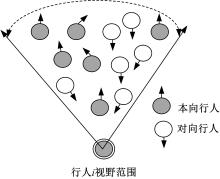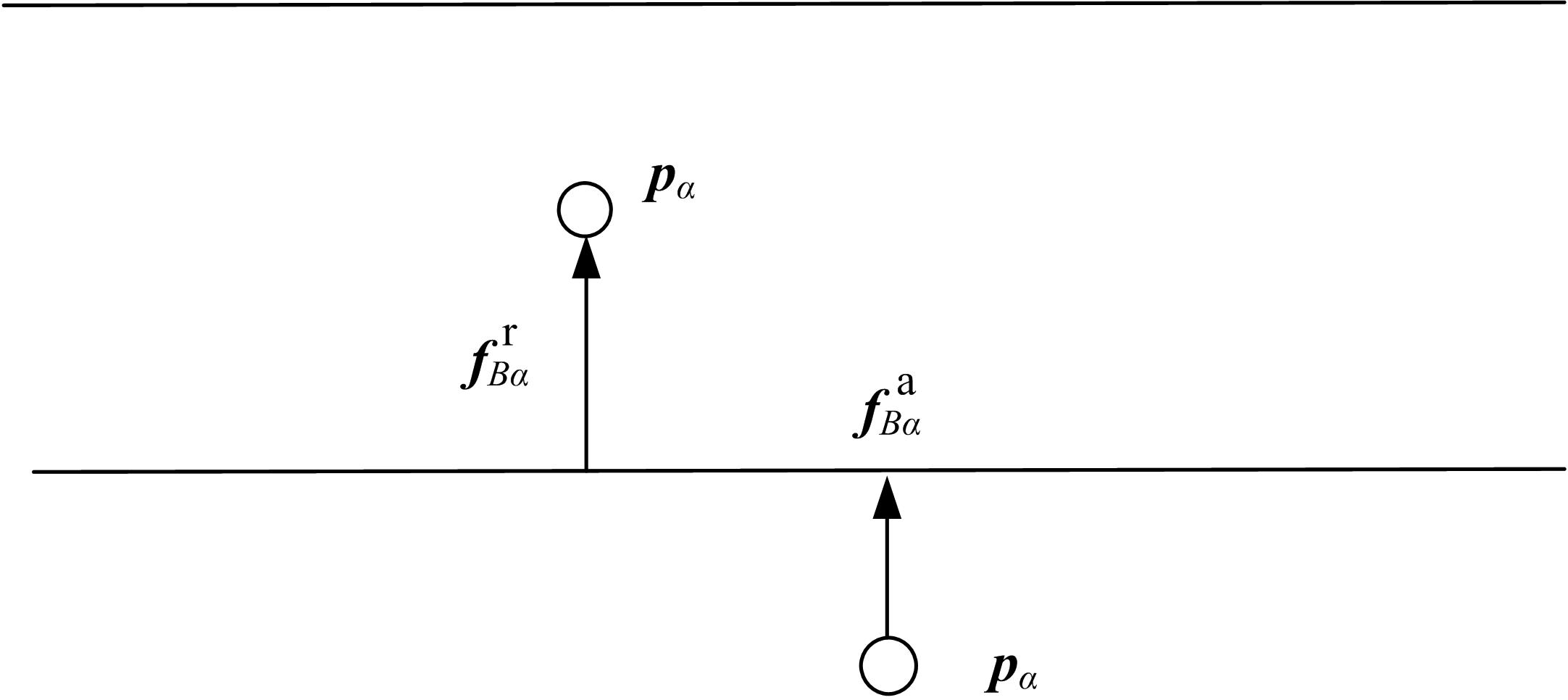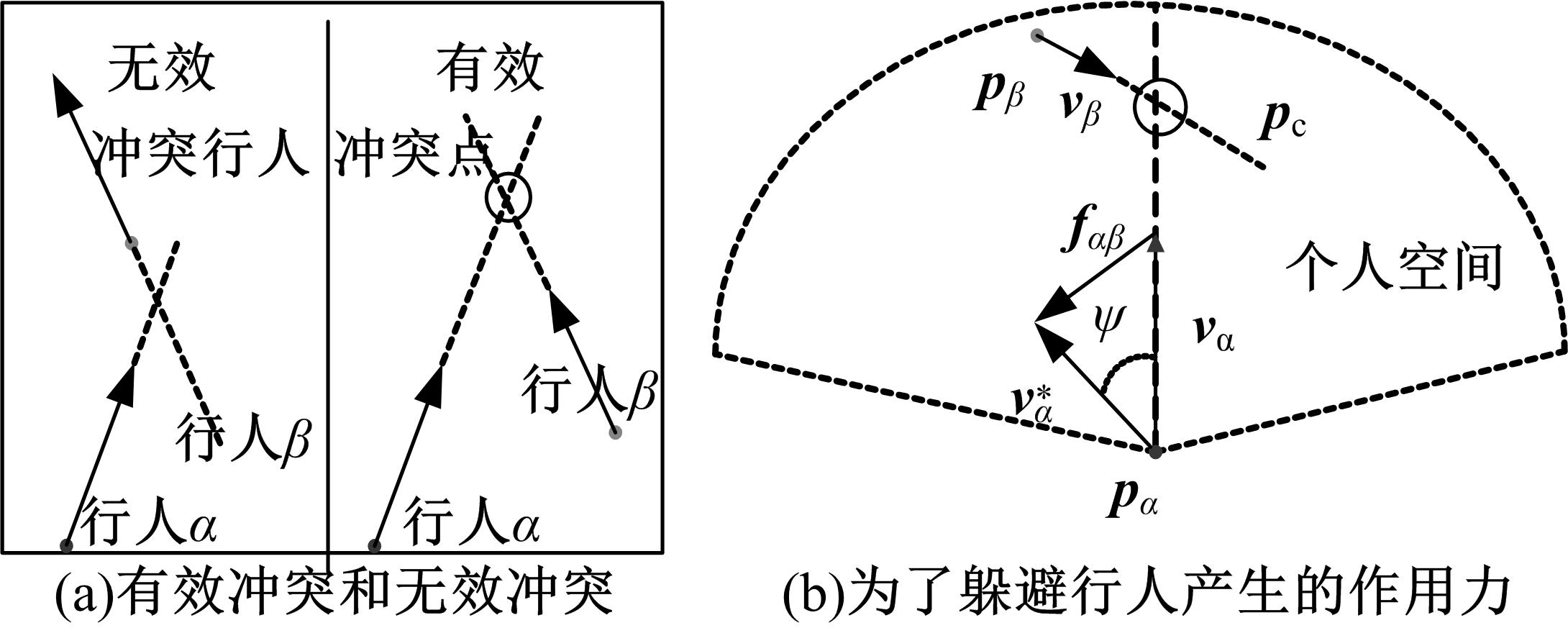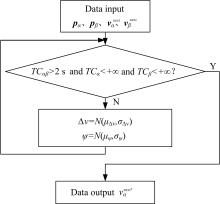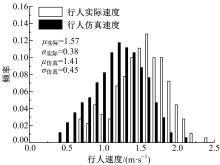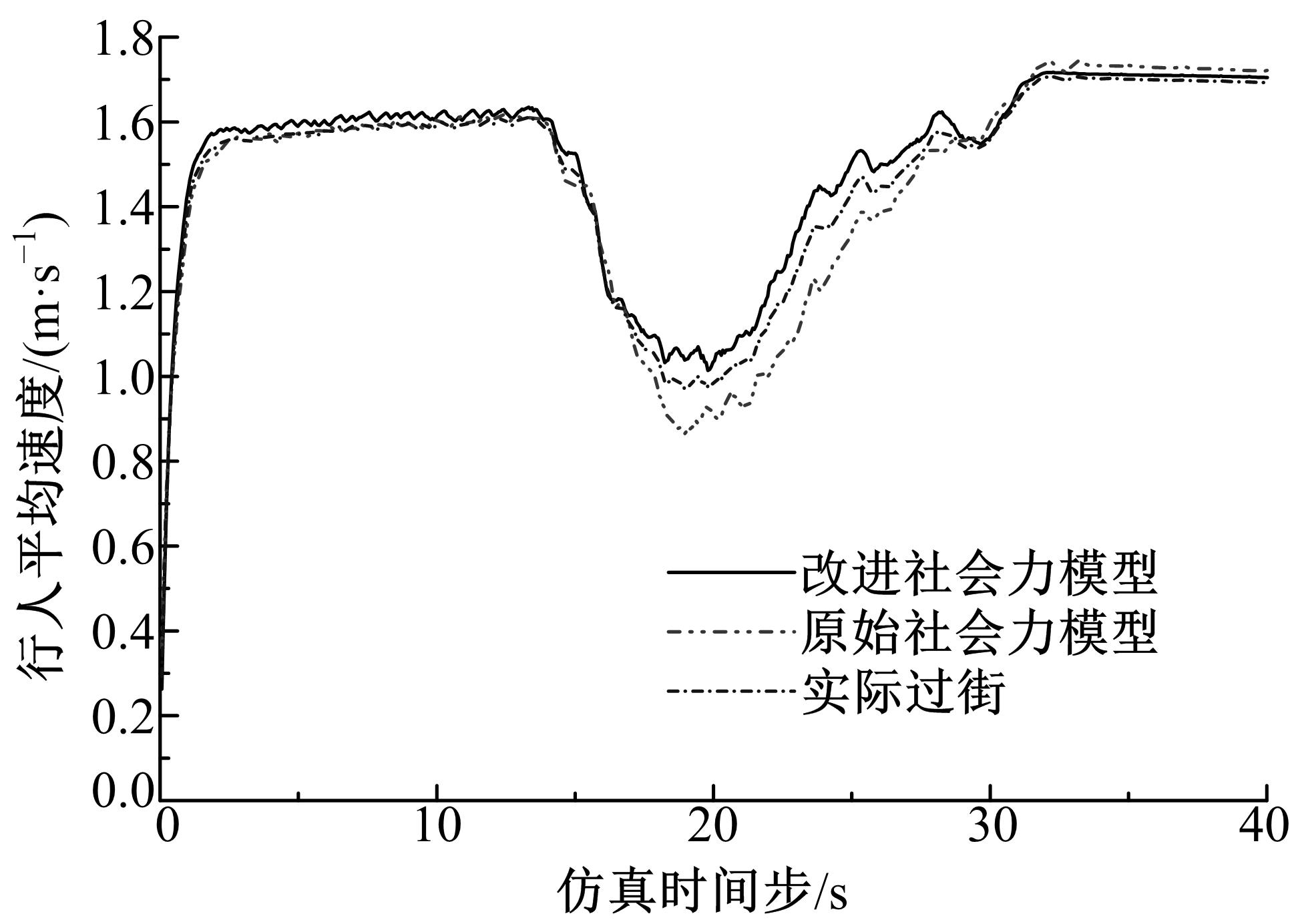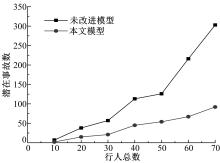Journal of Jilin University(Engineering and Technology Edition) ›› 2019, Vol. 49 ›› Issue (3): 688-694.doi: 10.13229/j.cnki.jdxbgxb20170612
Previous Articles Next Articles
Social force model considering bi⁃direction pedestrian slipstreaming behavior
Ning⁃bo CAO1,2,Li⁃ying ZHAO3( ),Zhao⁃wei QU1,Yong⁃heng CHEN1,Qiao⁃wen BAI1,Xiao⁃lei DENG1
),Zhao⁃wei QU1,Yong⁃heng CHEN1,Qiao⁃wen BAI1,Xiao⁃lei DENG1
- 1. College of Transportation, Jilin University, Changchun 130022, China
2. School of Economics and Management, Chang'an University, Xi'an 710064, China
3. School of Economics and Management, Xi'an University of Technology, Xi'an 710054, China
CLC Number:
- U491
| 1 | HelbingD, MolnarP. Social force model for pedestrian dynamics[J]. Physical review E,1995,51(5):4282⁃4286. |
| 2 | HelbingD, BuznaL, JohanssonA, et al. Self⁃organized pedestrian crowd dynamics: Experiments, simulations, and design solutions[J]. Transportation Science,2005,39(1):1⁃24. |
| 3 | MoussaïdM, PerozoN, GarnierS, et al. The walking behaviour of pedestrian social groups and its impact on crowd dynamics[J]. Plos One,2010,5(4):e10047. |
| 4 | ParisiD R, GilmanM, MoldovanH. A modification of the social force model can reproduce experimental data of pedestrian flows in normal conditions[J]. Physica A: Statistical Mechanics and its Applications,2009,388(17):3600⁃3608. |
| 5 | ApelM. Simulation of pedestrian flows based on the social force model using the verlet link cell algorithm[D]. Poznan: Institute of Computing Science Laboratory of Computing Systems,Poznan University of Technology,2004. |
| 6 | MoussaïdM, HelbingD, GarnierS, et al. Experimental study of the behavioural mechanisms underlying self⁃organization in human crowds[J]. Proceedings Biological Sciences,2009,276(1668):2755⁃2762. |
| 7 | 王占中,赵利英,焦玉玲,等. 信号交叉口自行车和行人混合交通流社会力模型[J]. 吉林大学学报:工学版,2018,48(1):89⁃97. |
| WangZhan⁃zhong,ZhaoLi⁃ying,JiaoYu⁃ling,et al. Social force model of pedestrian⁃bike mixed flow at signalized crosswalk[J]. Journal of Jilin University(Engineering and Technology Edition), 2018,48(1):89⁃97. | |
| 8 | 吴文静,王占中,马芳武. 从众心理影响下的行人群体行为演化博弈的仿真分析——以行人过街为例[J]. 吉林大学学报:工学版,2017,47(1):92⁃96. |
| WuWen⁃jing,WangZhan⁃zhong,MaFang⁃wu. Simulation analysis of evolutionary game of pedestrians′ group behaviors under influence of herd behavior:in case of crossing behavior[J]. Journal of Jilin University(Engineering and Technology Edition), 2017,47(1):92⁃96. | |
| 9 | 李珊珊,钱大琳,王九州. 考虑行人减速避让的改进社会力模型[J]. 吉林大学学报:工学版,2012,42(3):623⁃628. |
| LiShan⁃shan,QianDa⁃lin,WangJiu⁃zhou. Improved social force model considering pedestrian deceleration to avoid collision[J]. Journal of Jilin University(Engineering and Technology Edition), 2012,42(3):623⁃628. | |
| 10 | ZengWei⁃liang, ChenPeng, HidekiNakamura , et al. Application of social force model to pedestrian behavior analysis at signalized crosswalk[J]. Transportation Research Part C: Emerging Technologies,2014,40:143⁃159. |
| 11 | AsanoM, IryoT, KuwaharaM. Microscopic pedestrian simulation model combined with a tactical model for route choice behaviour[J]. Transportation Research Part C: Emerging Technologies,2010,18(6):842⁃855. |
| 12 | LiM, ShiF, ChenD. Analyze bicycle⁃car mixed flow by social force model for collision risk evaluation[C]∥3rd International Conference on Road Safety and Simulation, Indianapolis, USA,2011:1⁃22. |
| 13 | 江晟,王殿海,陈永恒,等. 基于视频的行人运动轨迹再现与过街行为表达[J]. 东南大学学报:自然科学版,2012,42(6):1233⁃1237. |
| JiangSheng,WangDian⁃hai,ChenYong⁃heng,et al. Pedestrian movement trajectory reappearance and crossing feature expression based on video processing[J]. Journal of Southeast University (Natural Science Edition),2012,42(6):1233⁃1237. | |
| 14 | 江晟,王殿海,赵莹莹,等. 混合交通特征表达及快速检测算法[J]. 吉林大学学报:工学版,2012,42(6):1459⁃1464. |
| JiangSheng,WangDian⁃hai,ZhaoYing⁃ying,et al. Feature characterization and rapid detection algorithm of hybrid traffic[J]. Journal of Jilin University(Engineering and Technology Edition), 2012,42(6):1459⁃1464. |
| [1] | Qiao⁃wen BAI,Zhao⁃wei QU,Yong⁃heng CHEN,Shuai XIONG,Chu⁃qing TAO. Modeling on trajectories of through vehicles with an unprotected left⁃turn phase under non⁃strict priority [J]. Journal of Jilin University(Engineering and Technology Edition), 2019, 49(3): 673-679. |
| [2] | Lei CHEN,Jiang⁃feng WANG,Yuan⁃li GU,Xue⁃dong YAN. Multi⁃source traffic data fusion algorithm based onmind evolutionary algorithm optimization [J]. Journal of Jilin University(Engineering and Technology Edition), 2019, 49(3): 705-713. |
| [3] | Chao⁃ying YIN,Chun⁃fu SHAO,Xiao⁃quan WANG. Influence of urban built environment on car commuting considering parking availability [J]. Journal of Jilin University(Engineering and Technology Edition), 2019, 49(3): 714-719. |
| [4] | Qiang TU,Lin CHENG,Fen LIN,Chao SUN. Finding shortest path considering traveler′s risk attitude [J]. Journal of Jilin University(Engineering and Technology Edition), 2019, 49(3): 720-726. |
| [5] | CHEN Yong-heng,LIU Fang-hong,CAO Ning-bo. Analysis of conflict factors between pedestrians and channelized right turn vehicles at signalized intersections [J]. Journal of Jilin University(Engineering and Technology Edition), 2018, 48(6): 1669-1676. |
| [6] | LIU Xiang-yu, YANG Qing-fang, KUI Hai-lin. Traffic guidance cell division based on random walk algorithm [J]. Journal of Jilin University(Engineering and Technology Edition), 2018, 48(5): 1380-1386. |
| [7] | LIU Zhao-hui, WANG Chao, LYU Wen-hong, GUAN Xin. Identification of data characteristics of vehicle running status parameters by nonlinear dynamic analysis [J]. Journal of Jilin University(Engineering and Technology Edition), 2018, 48(5): 1405-1410. |
| [8] | LUAN Xin, DENG Wei, CHENG Lin, CHEN Xin-yuan. Mixed Logit model for understanding travel mode choice behavior of megalopolitan residents [J]. 吉林大学学报(工学版), 2018, 48(4): 1029-1036. |
| [9] | CHEN Yong-heng, LIU Xin-shan, XIONG Shuai, WANG Kun-wei, SHEN Yao, YANG Shao-hui. Variable speed limit control under snow and ice conditions for urban expressway in junction bottleneck area [J]. 吉林大学学报(工学版), 2018, 48(3): 677-687. |
| [10] | WANG Zhan-zhong, LU Yue, LIU Xiao-feng, ZHAO Li-ying. Improved harmony search algorithm on truck scheduling for cross docking system [J]. 吉林大学学报(工学版), 2018, 48(3): 688-693. |
| [11] | CHEN Song, LI Xian-sheng, REN Yuan-yuan. Adaptive signal control method for intersection with hook-turn buses [J]. 吉林大学学报(工学版), 2018, 48(2): 423-429. |
| [12] | SU Shu-jie, HE Lu. Transient dynamic congestion evacuation model of pedestrian at walk traffic planning crossroads [J]. 吉林大学学报(工学版), 2018, 48(2): 440-447. |
| [13] | WANG Zhan-zhong, ZHAO Li-ying, JIAO Yu-Ling, CAO Ning-bo. Social force model of pedestrian-bike mixed flow at signalized crosswalk [J]. 吉林大学学报(工学版), 2018, 48(1): 89-97. |
| [14] | HOU Xian-yao, CHEN Xue-wu. Use of public transit information market segmentation based onattitudinal factors [J]. 吉林大学学报(工学版), 2018, 48(1): 98-104. |
| [15] | GAO Kun, TU Hui-zhao, SHI Heng, LI Zhen-fei. Effect of low visibility in haze weather condition on longitudinal driving behavior in different car-following stages [J]. 吉林大学学报(工学版), 2017, 47(6): 1716-1727. |
|
||
